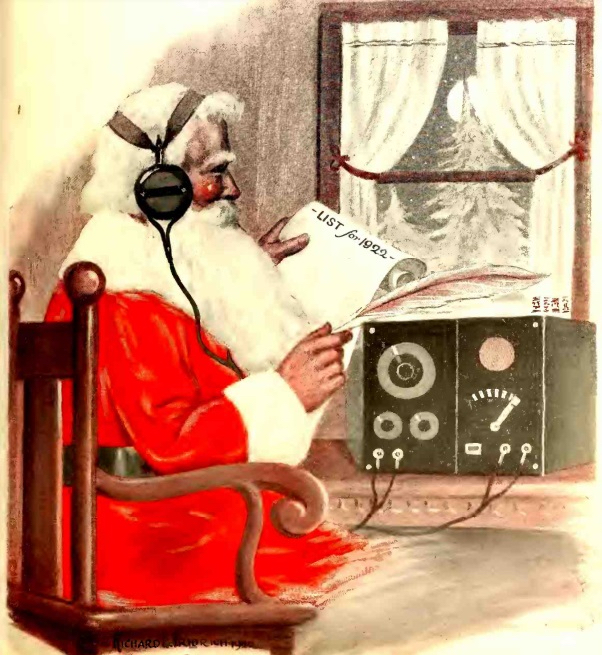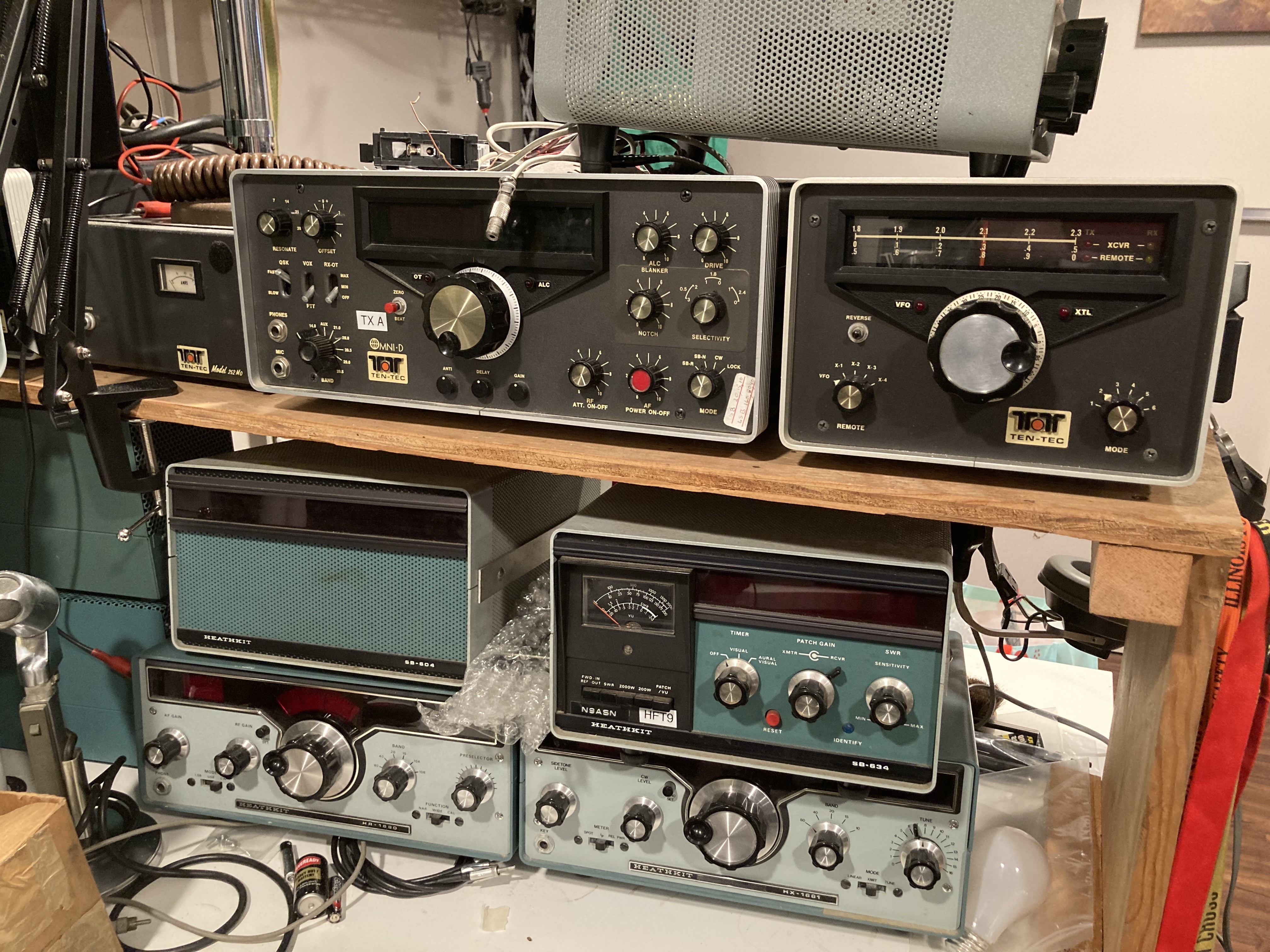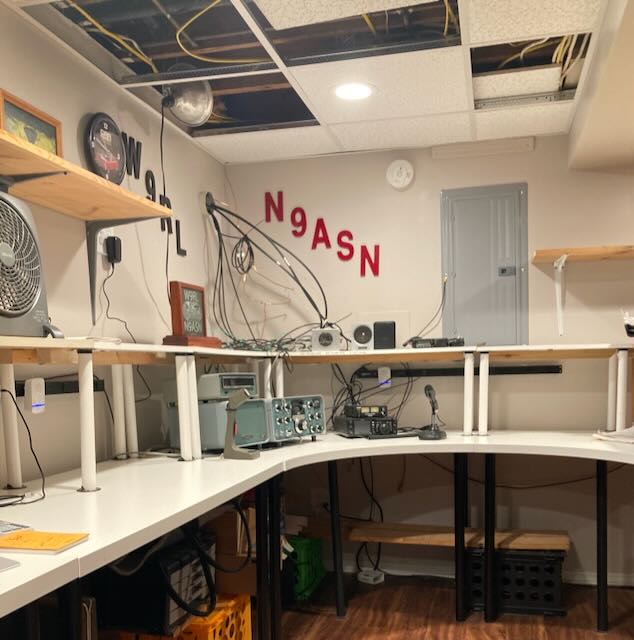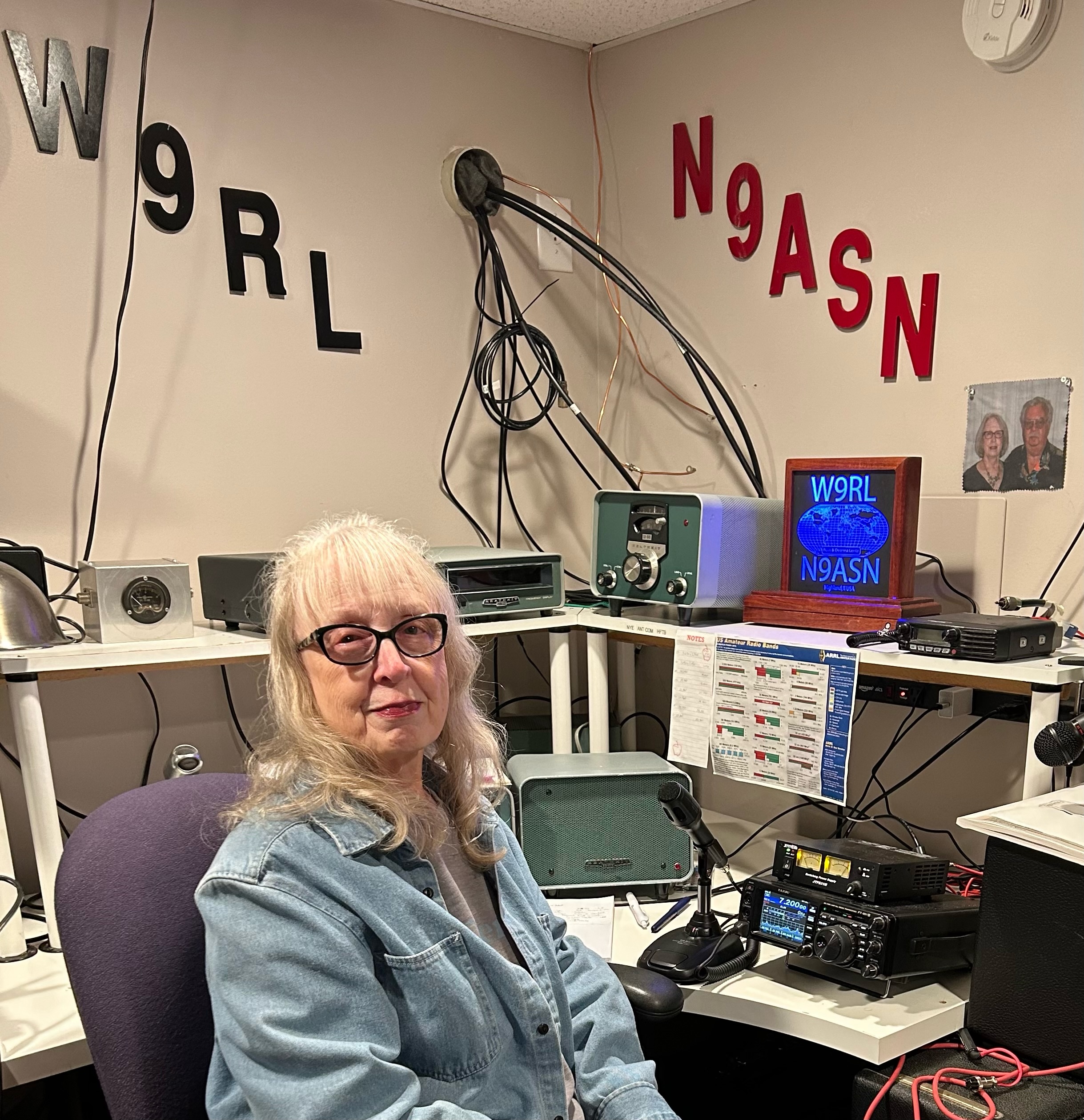Latest Awards
Issue #33: Guest Article: Where Have All the YL's Gone?
Did you know that 15% of our USA Ham Radio Operators are female? When a friend of mine told me that recently, I was blown away because those numbers mean that we have close to 115,000 women out there with radios. Where are they, anyway? Certainly not 15% of my logbook.
Of course, there are as many types of YL operators as there are OM operators. I applaud all the young women hams who have come in more recently through STEM programs. Today's Guest Column, however, concerns an older generation of YLs -- an important group. The title here idoesn't mean we don't see women on the air; it's just that we don't want to lose the ones we have. Perhaps our Guest Author is referencing a classic folk song (which I linked at the bottom of her article) by her choice of title.
KE7IR (Patti Donahue) and I were exchanging emails on this subject a few weeks ago when I realized that I was talking to someone with a great story. Patti came into the conversation with thoughts on how our community can support this sub-sector of female radio operators. She shared a bit of her own history and brought out some interesting points to consider. After reading Patti's article (printed in full below) I've come to a completely different mindset about Silent Keys and the women and radios they leave behind. Maybe you will too!
Dave Jensen, W7DGJ (Editor, "Trials and Errors, Ham Life with an Amateur" on QRZ.com)

Where Have All the YL's Gone
by Patti Donahue (KE7IR) with Dave Jensen, W7DGJ
Dave asked me where all the women operators are and how we can get more of them on the air. Well, honestly I think these ladies are hiding in plain sight. Very often, wives are encouraged to get their licenses by their husbands who are hams. And then, Life gets in the way. But these women are still there with licenses being renewed every 10 years . . . they are just too busy to be active. My article in QRZ this month suggests that we might consider changing the "norm" in at least one of our common practices. That is, helping widows clear out radio equipment. My hope is that you'll join the forum discussion at my conclusion. Tell me what you think and how things might go with a different approach -- it will help us all in building the Amateur Radio Services.
Perhaps we've connected on the air -- my call is KE7IR. I have been a radio operator since the early 70's and a ham since 1976. I first got interested in the magic of radio through the Citizens Band hobby. When I was single I had a small 11-meter station with an outdoor, vertical antenna that my brother helped me mount on the roof of my apartment. One day, at a CB Radio Picnic, I met Tom, the man who later became the love of my life.
About 6 months after we met, Tom took a vacation to visit his sister in Arizona. He was smitten with that State. He returned to Ohio to collect his belongings, sell off what he didn't need and move to Tucson, Arizona. We were best friends and communicated by letter and occasional phone calls for about 2 years. In those days, long distance phone calls were very expensive. Tom told me that if I wanted to talk with him I'd better get my ham license. So, I did.
Initially, I earned my Novice by studying with my brother Steve Clark (now WD8CGX) and our mutual friend Larry Seese (N3LDS) and then testing at the home of another local Ham. Later, I got my original call (WD8BQG) for my new General License in Ohio. After moving to Arizona, I achieved the Advanced Class rating with the help and encouragement of Tom . . . we married in 1978. Unfortunately, the demands of my new life (along with motherhood and a career) put my Amateur Radio interests on hold. For many years, I only operated on 2m going to-and-from work, along with the occasional QSO when my husband Tom (the former W7PD) would yell, "Come in here and talk with......." At that time, Tom was clearly the primary operator in our family. This is the way it may be for many women who married a ham.
In February 2022, my Tom passed away after a month of hospitalization. Though distraught and exhausted, I had to immediately travel to Ohio as my mother was also at her end of life. In mid-May, I traveled to Ontario, Canada, and spent the summer at our cottage on Sandy Island. I felt like I needed the beauty of nature and the comfort of friends to begin finding my way in this very different phase of my life.
Experiencing a New Life as a Ham Widow
During those first months, the idea of operating our station never crossed my mind (but I never considered disposing of our gear, either.) Our son Tommy (now W7PD, Extra Class) found comfort in listening to and occasionally operating his Dad's radios. In October of the year my husband died, Tommy said, "Mom, we have to carry on Dad's tradition of having the grandkids talk with Santa on Ham Radio." I agreed and both of us began working in earnest to streamline the shack and make it easier to operate. Around Thanksgiving, we accomplished the goal of having the grandkids talk with Santa on the 3.916 Santa Net.
 Shortly after Christmas 2022, I started listening and occasionally transmitting. At first, I would just listen and talk on one frequency. I studied up on the antenna tuner and linear amplifier and got on several bands. I found that Ham Radio had become an important part of my life once again, and recently got brave enough to upgrade to Extra Class at the tender age of 72. Radio brings me friendship and entertainment that fills up the long, quiet evenings. If I feel overwhelmed or uncomfortable, it can be easily cured with a spin of the VFO. I was lucky -- I had a homegrown Elmer in my son to assist me and provide encouragement along the way. I had good equipment left by my husband, augmented by a few new pieces of gear to make things easier to operate. Because Ham Radio made such a huge difference in my quality of life, I know it can help others who have lost their partner.
Shortly after Christmas 2022, I started listening and occasionally transmitting. At first, I would just listen and talk on one frequency. I studied up on the antenna tuner and linear amplifier and got on several bands. I found that Ham Radio had become an important part of my life once again, and recently got brave enough to upgrade to Extra Class at the tender age of 72. Radio brings me friendship and entertainment that fills up the long, quiet evenings. If I feel overwhelmed or uncomfortable, it can be easily cured with a spin of the VFO. I was lucky -- I had a homegrown Elmer in my son to assist me and provide encouragement along the way. I had good equipment left by my husband, augmented by a few new pieces of gear to make things easier to operate. Because Ham Radio made such a huge difference in my quality of life, I know it can help others who have lost their partner.
Deanna's Story (N9ASN)
My friend, Deanna lost her husband in September of 2021, five months earlier than when I became a widow. In many ways, she has led the way for me in this unrequested and unwelcome journey. Deanna's husband, Russ (W9RL) loved and collected many older radios. When Russ passed away leaving her so much equipment to dispose of, she was overwhelmed.


Although licensed, she thought of herself as a co-pilot operator never thinking that she might want to operate their station independently. After more than a year since Russ became a Silent Key, Deanna contacted local hams to help her remove and sell the equipment. They removed a 20-ft uHaul trailer full of gear, took it away and it slowly began to sell. Sadly (as is usual) she received only a tiny fraction of that resale. (See the "Before" and "After" photos above.)

I wish it had occurred to me to ask her to reconsider. Around this time, I was rediscovering how much I enjoyed Amateur Radio and how effectively it occupied those long, lonely evening hours in a quiet home. Eventually Deanna and I talked about this and she decided to try to recover some of her equipment and obtain help in setting it up. It took her several months to accomplish, but eventually those local hams brought back her Yaesu FT991 and helped her get their OCF Dipole working again. In July of 2023, Deanna started back on the radio without her "primary operator."
She has some regrets about letting her special equipment go, but she is happy to have a small station set up once again. This past Christmas, Deanna was able to have her two youngest grandchildren talk with Santa Claus over ham radio. It was a joyous, poignant moment for her and for me, listening from afar.
Let's Change our System
When a Ham becomes a Silent Key, local Hams or an Amateur Radio Club are asked to assist with removing and selling the equipment. What if these Clubs encouraged and assisted surviving spouses to keep some of their gear and to get active in Amateur Radio? To be sure, some of those who have lost their partner will just want to be rid of the shack. But, what if just 1 in 4 of them could be encouraged to either get a new license, or stay active? Yes, they would need help, but wouldn't that be fulfilling work for a dedicated Elmer? It could be uplifting instead of the sadness of removing and selling a Silent Key's treasures for pennies on the dollar.
Wouldn't it be nice to hear more female voices on the ham bands? The ARRL statistics indicate that lady hams are out there. I know some of them -- so do you. Lady hams in some cases have all the technical capabilities of an electronics engineer and can tear apart and rebuild an old boat anchor with no issue. Perhaps a new widow or widower won't be at that level instantly, but let's give them the chance. They have lived in the Ham Radio culture for years, and will bring all that knowledge and culture to the air immediately . . . they'll be respectful and participative members of your ham community.
[W7DGJ note to Ham Club leadership: Let's make note of Patti's ideas for a potential meeting discussion. It sounds like a "sad topic," but no -- It's an inspiring topic!]
Patti's Final Thoughts
If we really want to grow the Amateur Radio Services, shifting to this approach could get more women active on the ham bands. These "reactivated" women could bring a side benefit as well, as they can be quite influential with younger relatives and friends. They can encourage, assist, and inspire others toward obtaining Ham licenses. In many ways, grandmothers are less intimidating than grandfathers. So far, my son Jon (KK7MGG) and one grandson, Cody (KK7MLR) have obtained their first licenses. And now, our granddaughter Adeline (just 10 yrs) is studying for her Technician test. My grandkids seem to believe that if Grandma can be a Ham, then they can do it too!
It is my hope that you'll remember this T&E column the next time you are asked to assist someone who has just lost their principal operator. Instead of removing all that equipment, try to encourage that person to consider getting active in Amateur Radio. They may be more open than you think -- many months of long evenings in an empty house can be quite motivating. Having an experienced Ham friend offer their help could do the trick. My "thanks and 73" goes out to anyone who feels they'd like to brighten another's life by re-instilling an interest in the wonders of radio.
Patti
and from Dave, this link for us older hams . . . Please remember that we have many openings for Guest Columnists on "Trials and Errors -- Ham Life with an Amateur."

Have a comment? See what others are saying now in our Forum discussion!
|
|
Dave Jensen, W7DGJDave Jensen, W7DGJ, was first licensed in 1966. Originally WN7VDY (and later WA7VDY), Dave operated on 40 and 80 meter CW with a shack that consisted primarily of Heathkit equipment. Dave loved radio so much he went off to college to study broadcasting and came out with a BS in Communications from Ohio University (Athens, OH). He worked his way through a number of audio electronics companies after graduation, including the professional microphone business for Audio-Technica. He was later licensed as W7DGJ out of Scottsdale, Arizona, where he ran an executive recruitment practice (CareerTrax Inc.) for several decades. Jensen has published articles in magazines dealing with science and engineering. His column “Tooling Up” ran for 20 years in the website of the leading science journal, SCIENCE, and his column called “Managing Your Career” continues to be a popular read each month for the Pharmaceutical and Household Products industries in two journals published by Rodman Publishing. |
Articles Written by Dave Jensen, W7DGJ
- Trials & Errors #70 12/15/25: General Electric and the Alexanderson Kidnapping - December 18, 2025
- Trials & Errors #69 (11/21/25):The Man behind AM Radio - November 25, 2025
- Trials & Errors #68 (11/04/25): The Value of YouTube vs. In-Person Elmers - November 4, 2025
- Trials & Errors #67 (10/10/25): Defending the Spectrum - October 11, 2025
- Trials & Errors Issue #66 (Sept 22 2005): High Water: Ham Radio's Role in 2004 Indian Ocean Tsunami - September 25, 2025
- Trials and Errors #65 (9/10/25): Defining the "Spirit of Ham Radio" - September 10, 2025
- Trials and Errors #64 (8/24/25): Tech-Focused Hams -- A Shot Across the Bow to ICOM, Yaesu and More - August 24, 2025
- Trials and Errors #63 (08/10/25): A Digital Radio "Plug 'n Play" Experience - August 11, 2025
- Trials and Errors #62: Celebrating Radio Innovation and Innovators - July 27, 2025
- Trials and Errors #61: The Carrington Event -- The "What If's" of our Sun's Activities - July 13, 2025
- Trials and Errors #60: How Shorthand Moved from Telegraphy to Ham Radio - June 30, 2025
- Trials and Errors #59: Misinformation Surrounding the Origins of "Morse" Code - June 10, 2025
- Trials and Errors #58: Tiny Radios and the Men Who Built Them - May 30, 2025
- Trials and Errors #57: Are We Erasing History? Thoughts on Clarence Tuska - May 16, 2025
- Trials and Errors #56: How I Earned My Radio Merit Badge But Almost Got Kicked Out of Scouts - May 4, 2025
- More articles by Dave Jensen, W7DGJ...




























